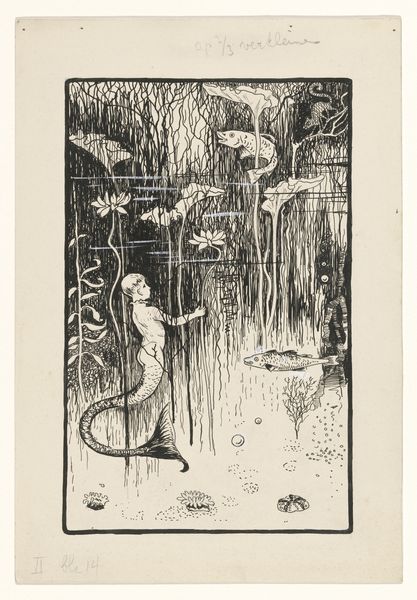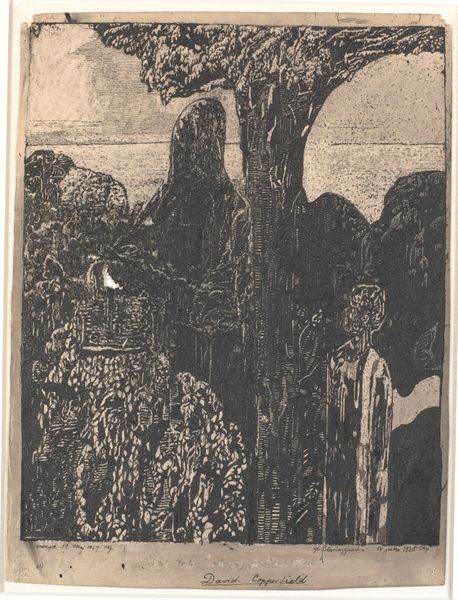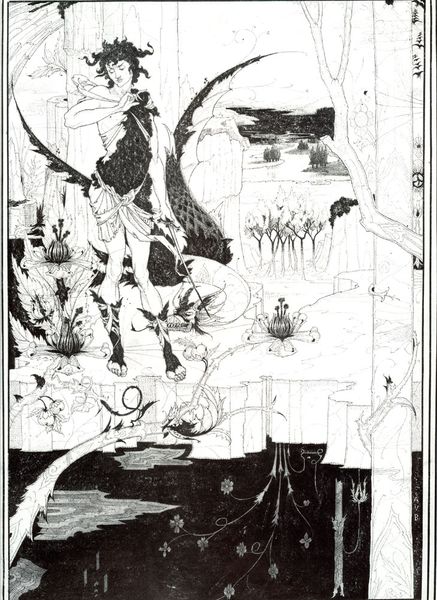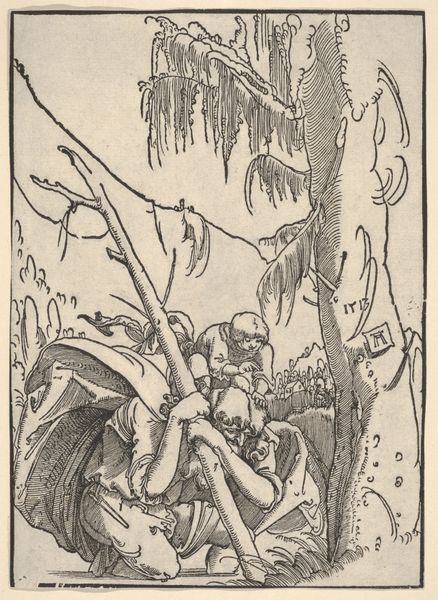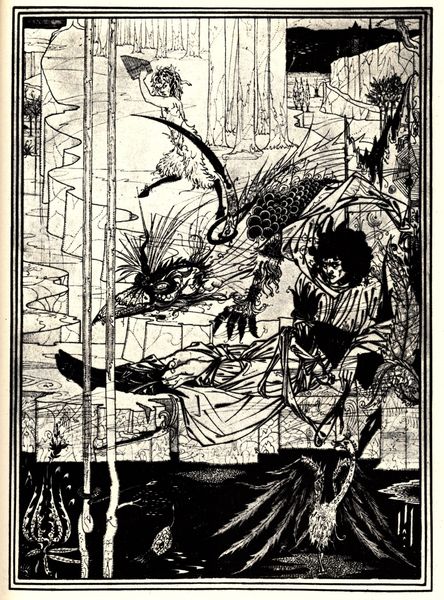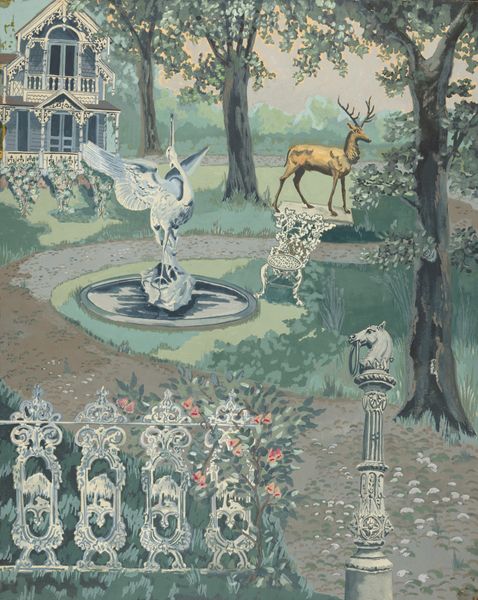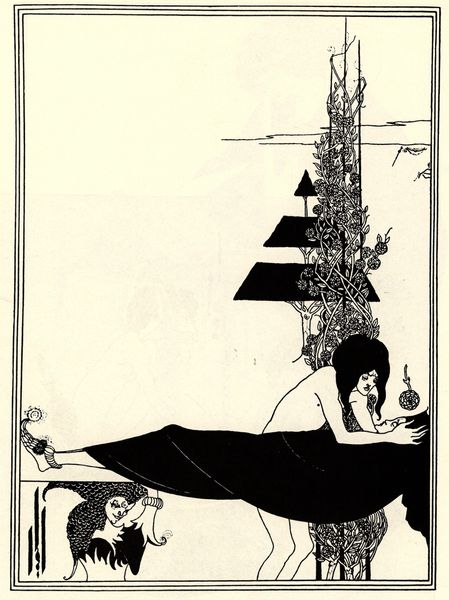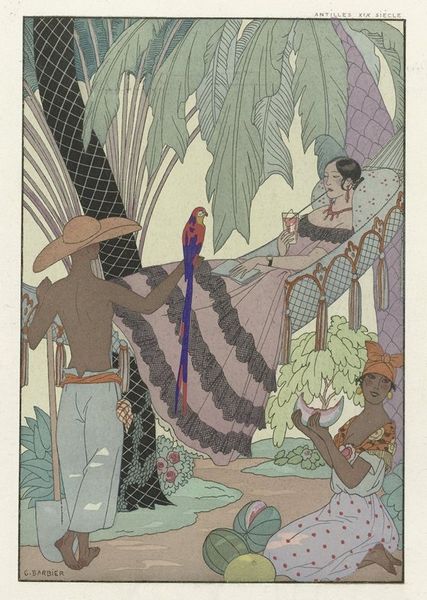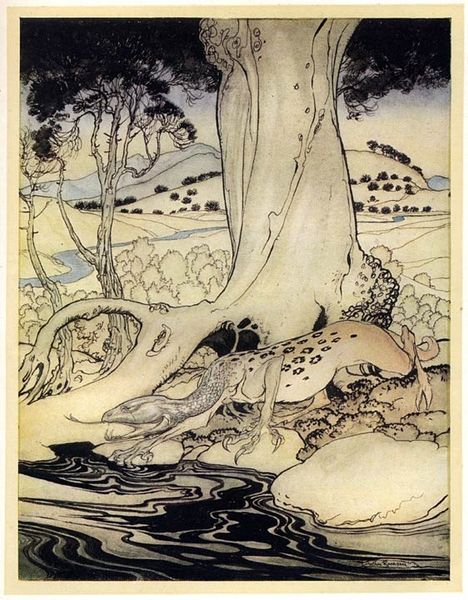
painting, watercolor
#
painting
#
landscape
#
figuration
#
watercolor
#
surrealism
Copyright: Modern Artists: Artvee
Curator: Looking at this makes me think of half-remembered dreams, somehow elegant but on the verge of collapse. Editor: I completely agree. We are looking at "Sans titre, Le piano Steinweg et le boa" from 1946, a watercolor piece by Salvador Dalí. It’s a fantastical landscape, as if seen through the distorted lens of a Freudian analyst's couch. Curator: Exactly! The Steinway piano, appearing twice, seems stranded. Once in the distance like a ghostly mirage, then closer, almost overgrown by the surrounding scene. Those serpentine forms… are they the boa constrictors of the title? Editor: Precisely! They writhe through the composition, blurring the lines between flora, fauna, and the man-made—like some sort of evolutionary transgression upon culture. Given Dalí’s political stance at the time and the recent end of World War II, it begs the question of what societal structures are being strangled by these phallic snakes. Curator: I hadn’t considered the political context, but you are right. Still, for me, the watercolor brings to mind a sort of romantic ruin. The fragility of the medium captures the transient beauty of decay and forgotten dreams. Notice that vibrant slash of red fabric—it's draped, impossibly, from a bare tree. Like a cry of passion amidst this encroaching quietude. Editor: Indeed, Dalí often blurred the line between desire and destruction. I read that flash of color not as romantic but rather a violent scream, like a warning flare—the red perhaps signaling a societal threat linked with patriarchal structures in decay after the war. The ruined classical architecture speaks to this potential destruction of previous power paradigms. Curator: Perhaps, or perhaps it’s a memento mori, a subtle whisper reminding us of the transience of even our most cherished structures, artistic and otherwise. Like the final chords of a fading piano sonata. Editor: Yes, both are true, I believe. These sorts of contradictory tensions are Dalí's signature contribution, laid out bare using the fragile delicacy of watercolor washes. Ultimately the work's power resides in the uncomfortable tensions that lie unresolved for the viewer. Curator: In the end, it’s this blend of the beautiful and the bizarre that keeps me returning to this arresting landscape. It offers solace and unsettles you all at once. Editor: Yes, unsettling. An ongoing silent battle is there for us to contend with as both historical observers and forward-thinking proponents of deconstruction and progress.
Comments
No comments
Be the first to comment and join the conversation on the ultimate creative platform.
